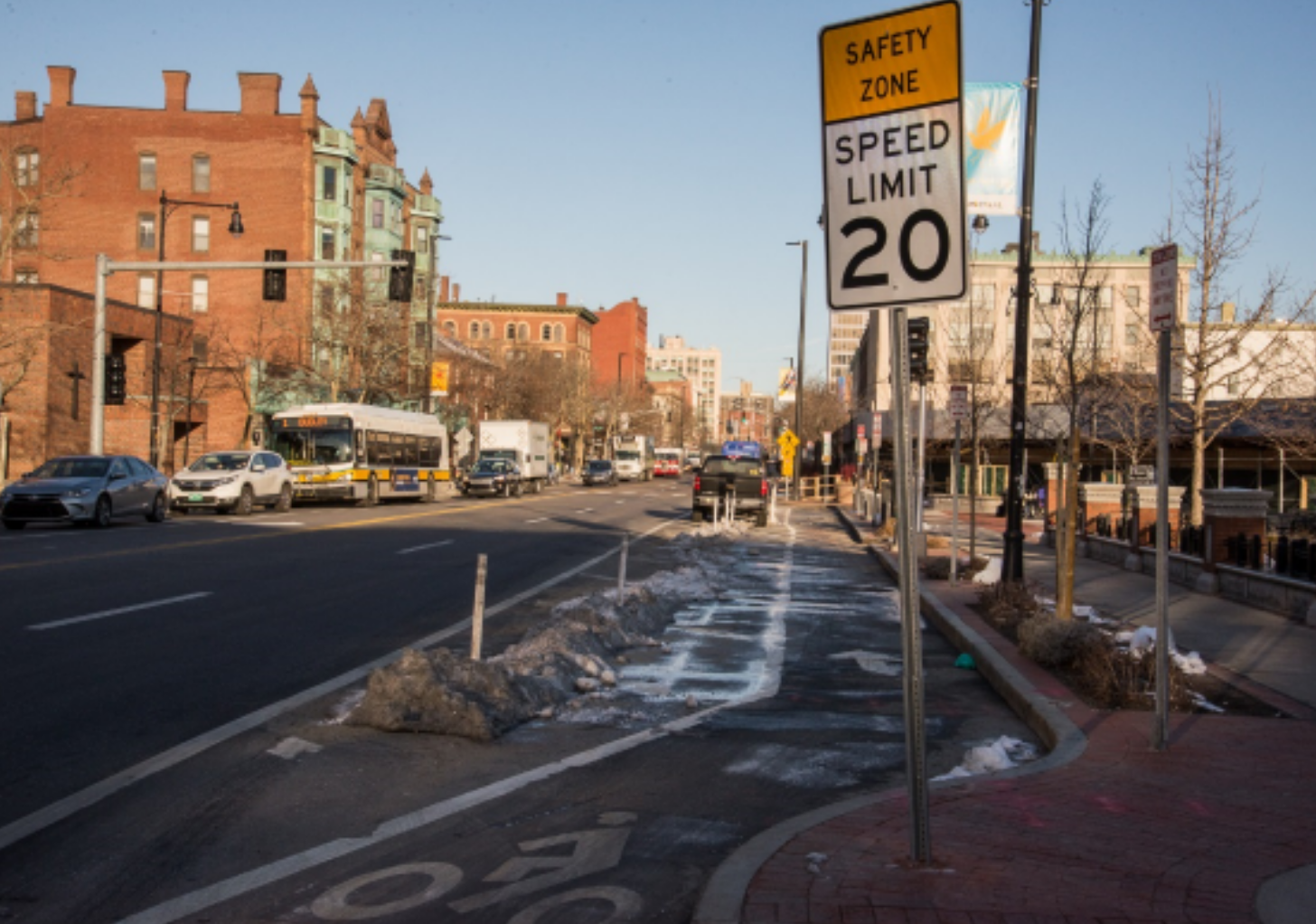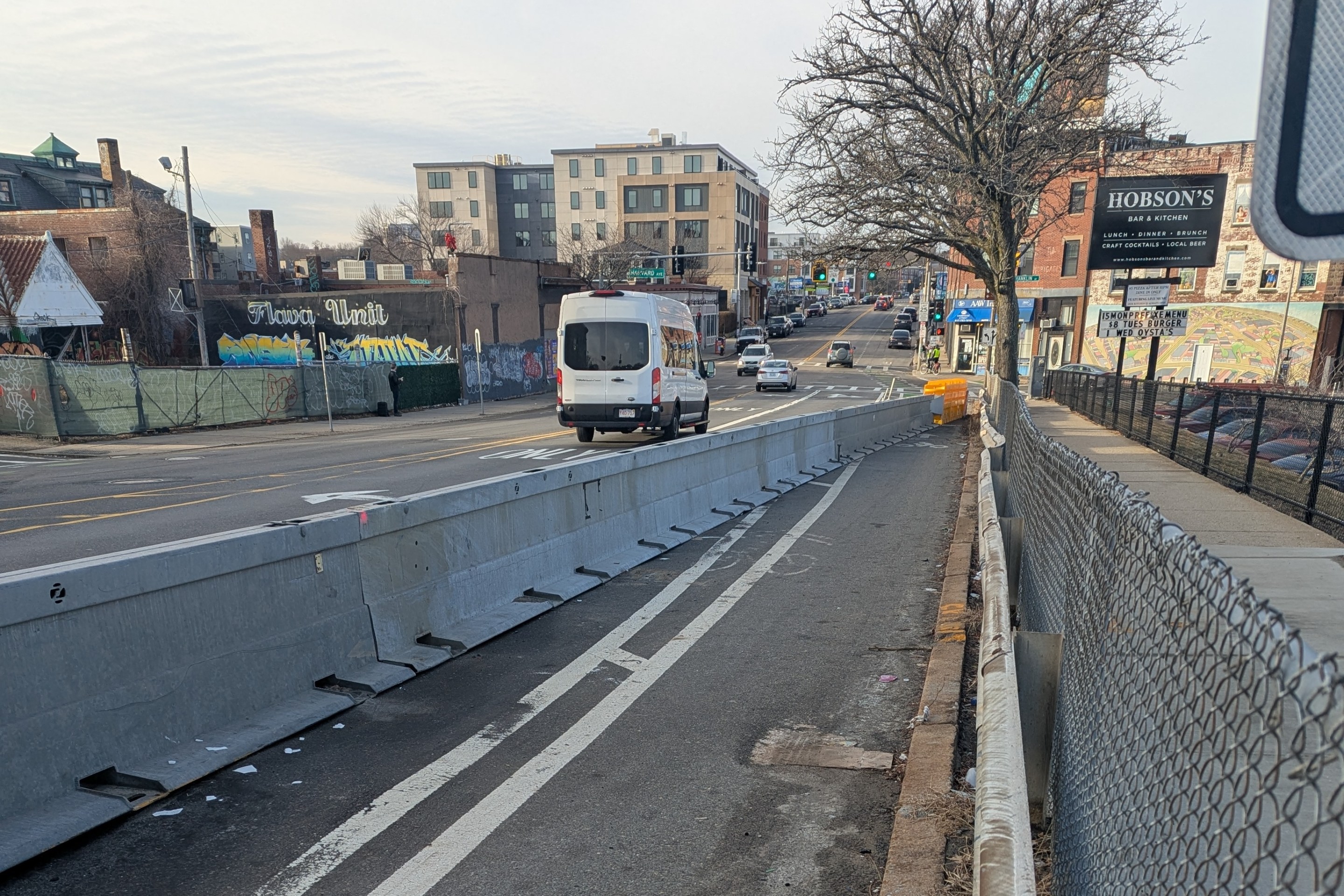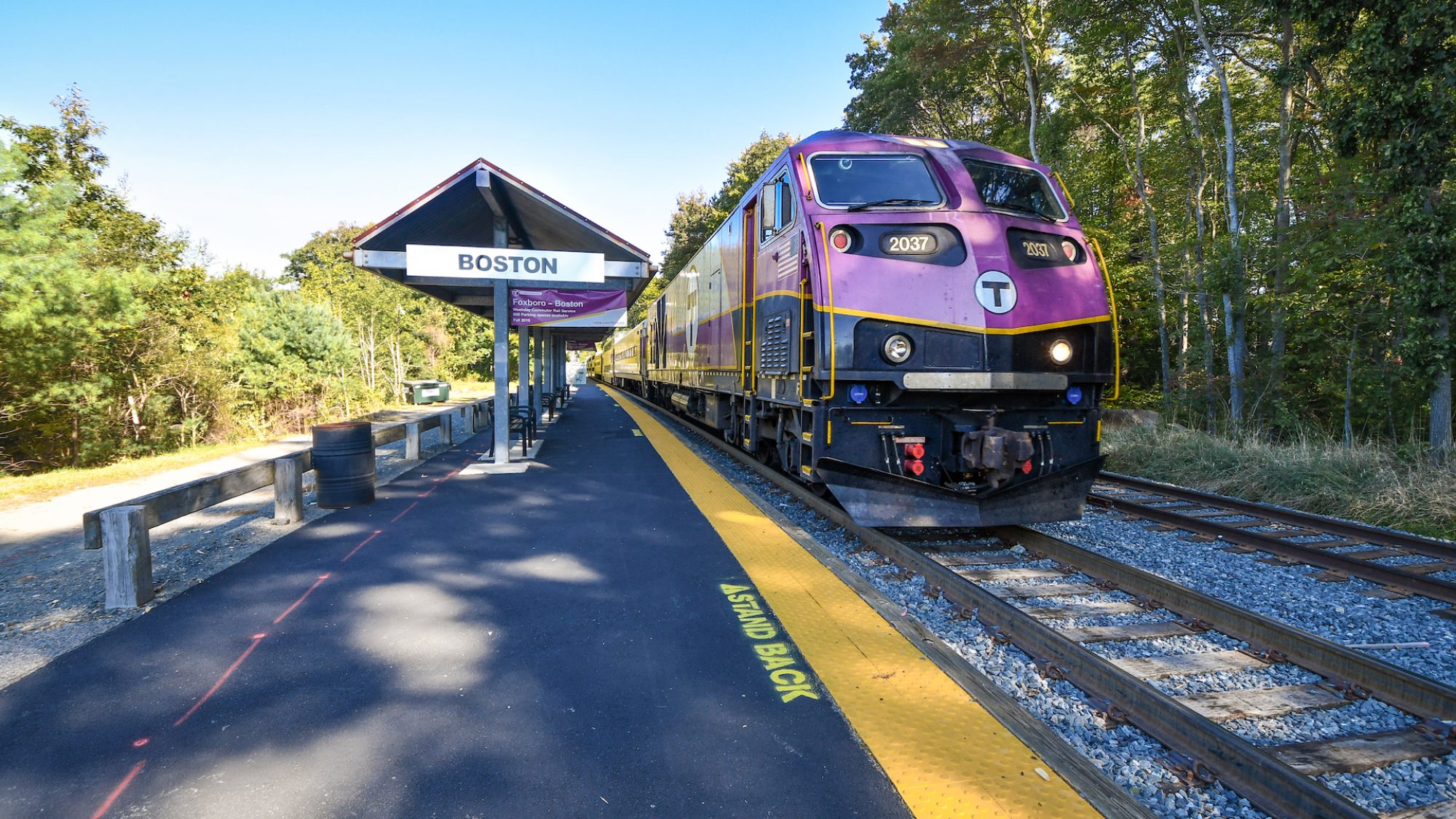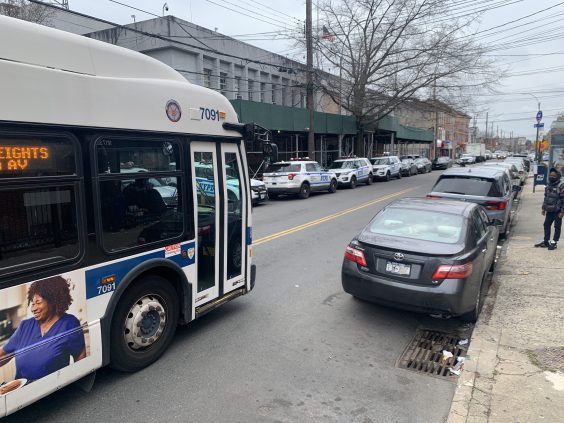The MassDOT will spend the next year examining new policies for managing traffic speeds on state roadways, replacing a system in which lead-footed drivers determine speed limits with a system that prioritizes human life and safety.
Jacqueline DeWolfe, MassDOT's Director of Sustainable Mobility, provided an overview of the new initiative at Wednesday's online meeting of the Massachusetts Bicycle and Pedestrian Advisory Board (MABPAB).
“Evidence shows that speed increases the likelihood of a crash, and the severity of a crash," said DeWolfe. "This is particularly critical for people walking and biking, in which case the motor vehicle speed is a significant determinant of whether the person hit will survive.”
The Commonwealth's current speed limit policies are generally governed by the "85th percentile rule" – if traffic engineers measured the speeds of 100 random drivers on a roadway, in ideal weather conditions and no traffic, then the speed of the 15th-fastest driver will determine the posted speed limit.
That "typical" driver behavior has also traditionally informed how traffic engineers design roadway projects, creating an absurd feedback loop: highway engineers catered to the 85th percentile driver by widening roads, and drivers responded in turn by driving even faster.
This approach relies on a flawed assumption: that we can trust the majority of drivers to operate their vehicles safely and responsibly. Or, as the MassDOT Procedures for Speed Zoning Manual puts it, using "the observed 85th percentile speed (as) the basis for establishing speed zoning... assumes that a majority of motorists are prudent and capable of selecting safe speeds."
In recent years, a growing body of research has debunked this approach. A 2017 National Transportation Safety Board report panned the 85th percentile rule, finding that there was "no strong evidence" supporting it. Similar findings from a task force in California have led to a review of the Golden State's own speed limit policies.
Adding to the evidence that Massachusetts drivers can't be trusted to crowd-source their own speed rules are the 139,000 crashes they caused in the Commonwealth last year, including 2,290 that seriously injured someone and 329 crashes that killed at least one victim.
Instead, DeWolfe says that MassDOT would like to move towards speed limit and roadway design policies that are governed by the state's Vision Zero principles.
“Vision Zero means planning for human error; acknowledging that people will make mistakes, but when they do, we can reduce the potential that those mistakes are going to hurt people,” said DeWolfe.
Ultimately, DeWolfe said that the new policies should make it easier to implement traffic calming measures, and provide a data-driven process to prioritize speed reduction efforts.
Stacey Beuttell, the executive director of WalkBoston, attended today's MABPAB presentation and said that her staff has already weighed in with recommendations for MassDOT's speed policy review.
"We often hear from residents and advocates that want to lower speed limits, and they ask us, 'what's the process?' And we tell them, ‘honestly, if you do a speed study, they may actually raise the speed limit,’" said Beuttell. "Speed studies rule the day, and they shouldn’t. It should be context-specific. If there's a school, or heavy foot traffic, or seniors living nearby, all that should be taken into consideration."
MassDOT's speed policy initiative will develop its recommendations over the next year, with an aim of introducing new policies for implementation in 2021.






